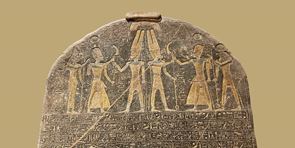
Josh Meynell takes a look at an Egyptian inscription from 1200 BC, which contains one of the earliest mentions of Israel in extra-biblical documents.
14th June 2024
The Old Testament is our greatest source for learning about the ancient Israelites. Sometimes, however, texts from Egypt or elsewhere can be drawn upon too.
Consider the Merneptah Stele, a granite slab three metres tall documenting the military victories of Pharaoh Merneptah (successor to the more famous Ramesses II) from around 1200 BC. It was discovered in Merneptah’s destroyed funerary temple (a huge construction dedicated to the worship of the deified Pharaoh) by the legendary Egyptologist and archaeologist Flinders Petrie in 1896.
Continue reading here.
 CONTRIBUTOR
CONTRIBUTOR








